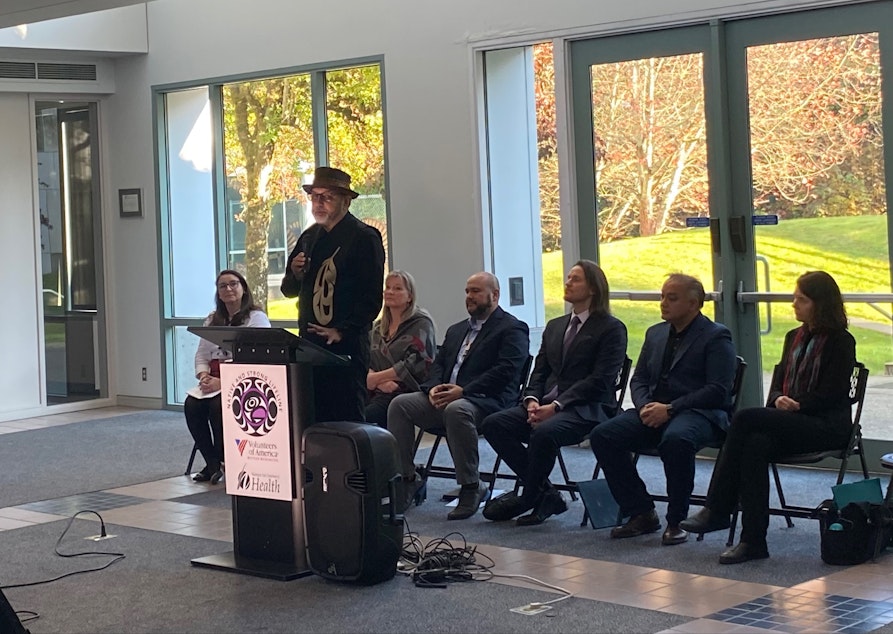A new crisis line for Native people in Washington state

A statewide crisis line that debuted earlier this month is the first in the country to be specifically geared toward serving Native American and Alaska Native people, a resource that advocates say is much needed.
Washington’s Native and Strong Lifeline is part of the state’s 988 crisis centers. When callers dial 988, there are already separate lines for veterans and Spanish speakers, and now there is a specific option for the Native and Strong Lifeline.
Thirteen Tribal and Native counselors from across the country will staff the Lifeline and are fully trained to offer crisis intervention and support, “with an emphasis on cultural and traditional practices related to healing,” according to a statement from the Washington State Department of Health.
Rochelle Williams, tribal operations manager with Volunteers of America Western Washington, said during a hotline launch event this month that the word “crisis” can come off as scary, or intimidating – but that people experiencing a gamut of feelings, from stress caused by a life event such as the death of a loved one to those having suicidal ideation, are all welcome to call the crisis hotline.
“Maybe you have ended a relationship or maybe one’s been ended with you,” Williams said. “Maybe you just don't know why you are feeling the way that you do that day. The maybes are endless, but we are here for every single one of them.”
Sponsored
Williams emphasized the importance of having Native people, with knowledge of the deep-rooted history and traumas that can impact Indigenous people, manage the program and answer the phones. Williams is an enrolled member of the Ehattesaht First Nation, and a descendant of the Tulalip Tribes.
“They already understand these traumas, [and] they already and most likely have experienced quite a bit of the same traumas that I have as a Native person,” Williams said. “Not everything is identical, but it saves a lot of time trying to explain what we mean when we're talking to somebody, when we have mental health concerns or needs.”
Some of these traumas include a history of forced relocation, land dispossession, boarding and residential schools, and broken treaties, the impacts of which still reverberate today in Native communities. These intergenerational traumas have contributed to higher rates of suicide and mental health crises in these communities.
In Washington state during 2020, the suicide rate for non-Hispanic American Indian and Alaska Native people was 34 percent higher than the general population, according to the Washington State Department of Health. A 2019 survey compiled by the Centers for Disease Control and Prevention found that one in four American Indian or Alaska Native high schoolers who responded had attempted suicide over the previous year.
Dr. Umair A. Shah, Washington’s secretary of health, said in a statement that the “Native and Strong Lifeline is crucial to saving lives, especially in a population so disproportionately impacted by suicide. Individuals need to know they are not alone, and help is available if you need it.”
Sponsored
Dialing 988 connects callers to the National Suicide Prevention Lifeline either by call, text or chat. These crisis centers were made possible by federal agencies and Congressional legislation in 2020 which adopted the three-digit number as a national hotline. A Washington state bill expanded the service last year, and created a funding infrastructure for it.
During an event on Nov. 17 celebrating the creation of the Lifeline, Aren Sparck, Chevak Native Village Qissunamiut tribal member and Office of Tribal Affairs administrator from the Health Care Authority, said Covid-19 added obstacles to those already faced by Native people and that these impacts contributed to a decrease in life expectancy rate by 6.6 years.
“Our goal is to serve as an example for other states to emulate the Native and Strong Lifeline,” Sparck said.




